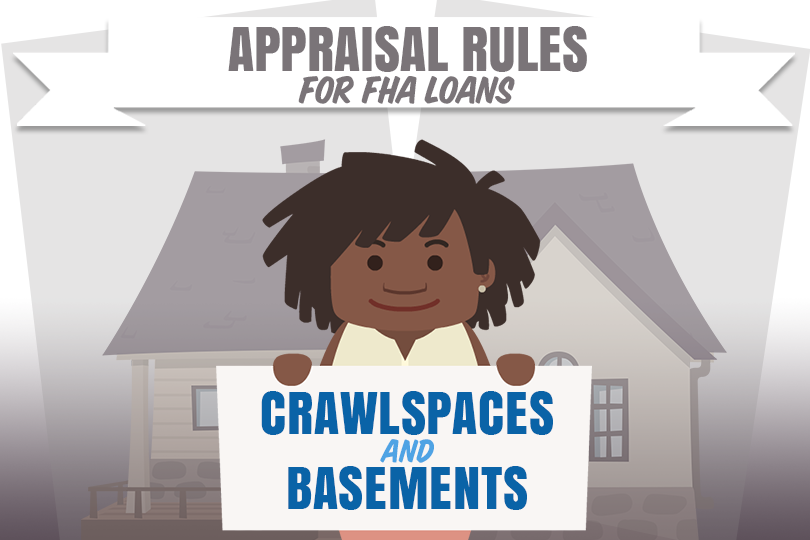Appraisals and the Crawl Space

“I am working with a home that was built in 1946. The crawl space clearance under the home is supposed to be by FHA standards 18 inches. This home only has 12 to 15 inches. It is not possible to get the dirt out from under this house to meet the requirement. Is there a chance they would waiver this requirement and if so who would I need to contact?”
When it comes to the specific FHA requirements in this area, A HUD publication for single family home appraisers mentions the following guidelines:
“A minimum distance of 18 inches from the ground to bottom of the joists is highly recommended but not mandated.” The appraiser will enter the crawl space (at a minimum entry of the head and shoulders) to observe conditions except when access is obstructed, when entry could damage the property, or when dangerous and adverse situations are suspected.”
“In any event, the crawl space size and accessibility dictates the level of entry. However, the appraiser will visually examine the crawl space for inadequacies.”
That would seem to indicate some discretion is possible during the appraisal process. But there may be other concerns--state and local building code may also play a role in whether the appraiser can overlook the conditions mentioned above.
That means some personal research into state/local building code might be required to determine whether the conditions of the home are in violation or not–that would likely be one of the most important aspects of this issue, assuming the appraiser is otherwise able to overlook the condition of the crawlspace.
Appraisals are always potentially affected by state and local building code. Borrowers should never assume that just because the FHA is flexible on an issue related to acceptable conditions of the property that state/local code won’t have something to say. FHA loan rules never override state or local laws, so the building code issue is an important one. You can always check with your loan officer or a local real estate expert to get a general idea of what might happen based on previous transactions that might be similar.
------------------------------
RELATED VIDEOS:
What You Need to Know About the Appraisal Fee
The Appraisal is an Important Requirement
Build Your Dream Home With a One-Time Close Loan

Do you know what's on your credit report?
Learn what your score means.






